Inside your local Phone Company
Operating at great personal risk, we
spared no expense to bring you these
images of common Central Office equipment,
found deep within the hallowed
halls of your local
CO. Clicking on an image will show it
full size at 1152x794 pixels.
Please be patient: There are 24 'small' images to load.
Amazing what you can do with one of
those $8 Kodak 'cardboard box' 35mm cameras..
The photo mission was necessarily completed in haste.
If you spot any errors on this page, please
take a moment to
let me know so I can make corrections!
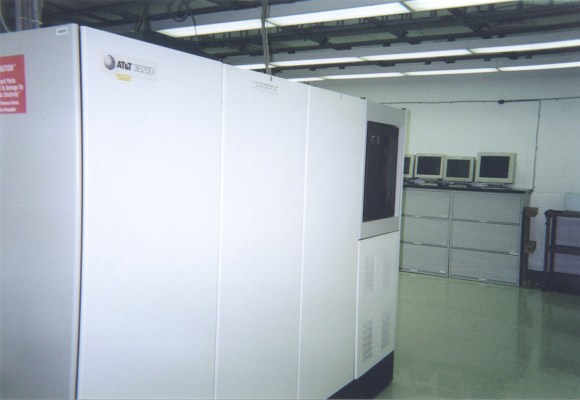
The AT&T 3B20D. Computer or Switch?
Mr. Locke informs us that The 3b20d is used as
a detached processor. It is used as a computer, not a switch. If this
belongs with the analog ESS, then the switch is no longer called a 1ESS
or a 1E ESS, it is a 1A ess. The detached processor makes it so. If
the 3b20 is not there, then there are hundreds of memory cards, about
8-1/2 x 11 aluminum cards with little iron dots on them, the actual
memory, you can see every "bit" on each card.
Mr. Rehor informs us that "The 3B20 came in two variations -- 3B20S
(simplex) and 3B20D (duplex
hardware). The 3B20D is used for a variety of purposes, including SSP, SS7,
billing systems, the Administrative Module of the 5ESS, an adjunct to the
1AESS and 4ESS. The multiple cabinets of the 3B20D were replaced by a
2-shelf 3B21D software compatible version. In some later systems, including
the 5ESS VCDX, the 3B20D software runs on a standard Sun Microsystems
computer using a custom software emulator of the 3B20D hardware.
Ironically, the software runs faster in emulation mode than on the native
hardware because the 3B20D is only a 1 MIP machine."
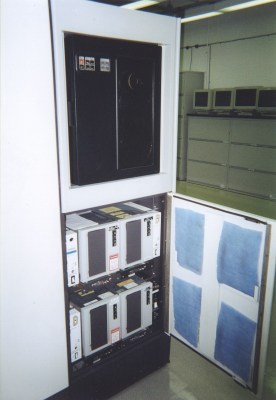
The AT&T 3B20D 9-track and disks.
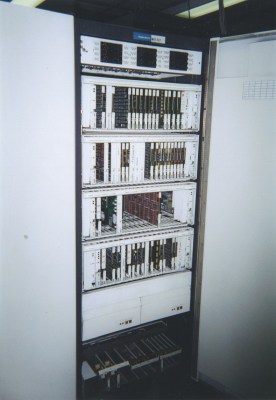
The AT&T 3B20D Is a duplex computer
which interfaces with the 1AESS and other office purposes. It takes
care of more advanced accounting, software upgrading, load-balancing and SS7
implementation. Thanks to
Mr. Heisler for this great info!
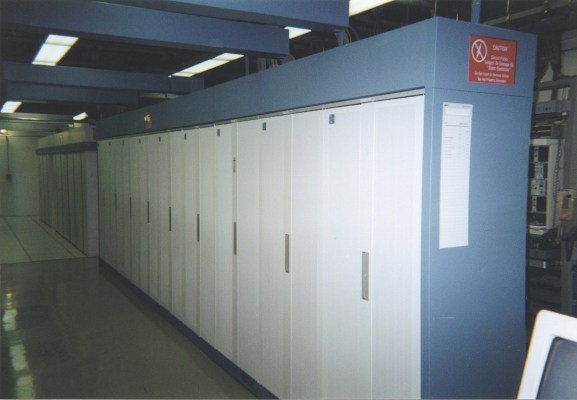
The AT&T 5ESS.
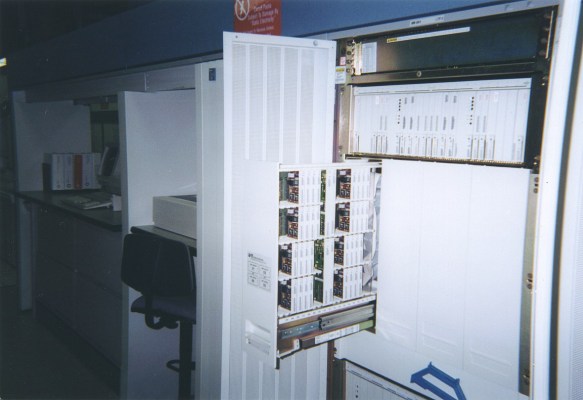
AT&T 5ESS with door and module drawer
open. The little modules are processors
and amplifiers for voice or data.
Your specific phone line connects
to an individual one of these
little cards. If you go to ISDN or
another digital service, the Telco
will swap out the little module for a
different type, and reprogram the
switch.
Mr. Rehor kindly informs us that The photo shows an Integrated
Services Line Unit (ISLU), one of several versions of line units in a 5ESS
(this is the earlier version of the ISLU; He worked on them around 1987-88).
As you note, the ISLU has a separate card for each line, which can be a
T-card for ISDN T-interface, S-card for ISDN S-interface, or Z-card for
POTS. Later ISLUs had multiple lines per card to reduce the per-line cost.
Earlier and later analog-only line units terminate many POTS lines on a
single large card.
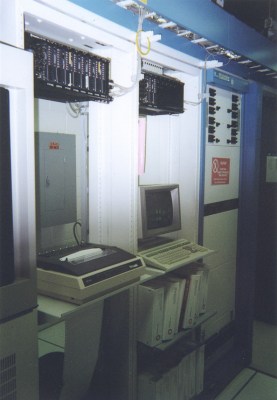
AT&T 5ESS control console
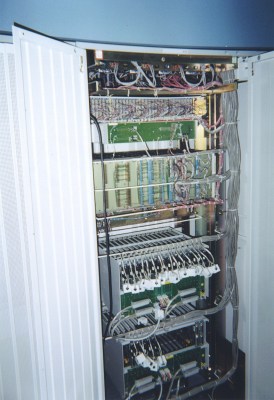
AT&T 5ESS rear view
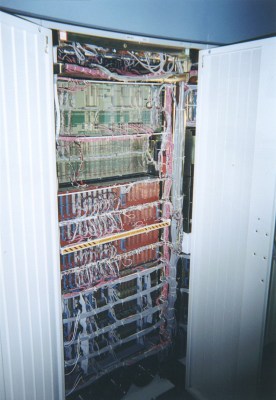
AT&T 5ESS rear view
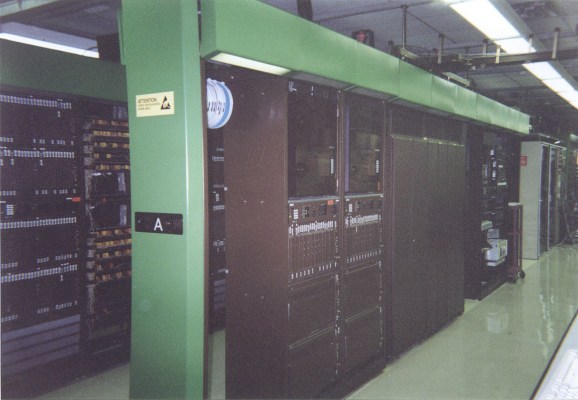
The Northern Telcomm DMS-100 Switch
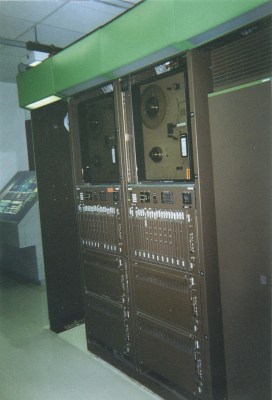
Northern Telcomm DMS-100. Notice the
9-track tape drives. These are very
common at the CO, even today.
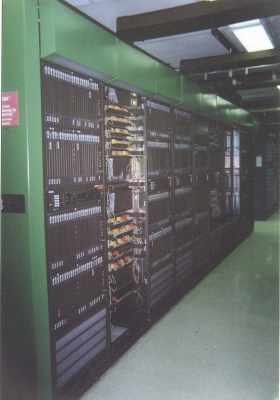
Another DMS-100 rack.
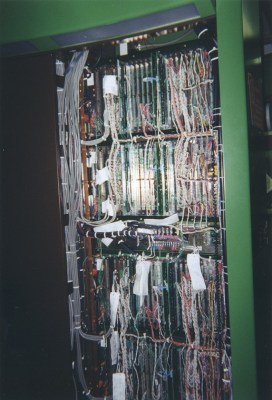
DMS-100 rear view
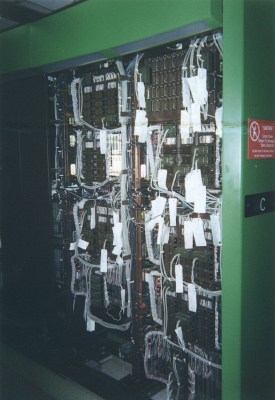
DMS-100 rear view
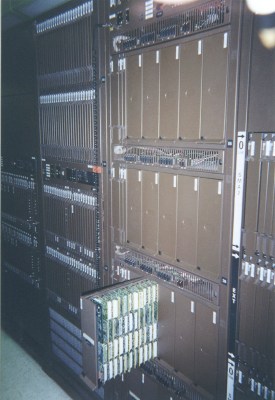
The Northern Telcom DMS-100 is
shown with a module drawer
open. The little modules are processors
and amplifiers for voice or data.
Your specific phone line connects
to an individual one of these
little cards. If you go to ISDN or
another digital service, the Telco
will swap out the little module for a
different type, and reprogram the
switch.
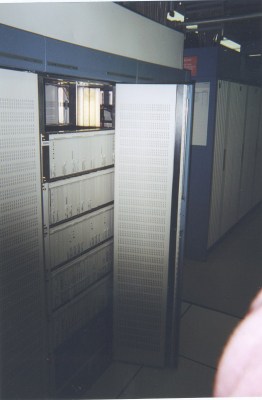
We thought this was a Western Electric 1AESS Switch, but it is
a part of the 5E. It was not until 5ESS that equipment was
put in what is called 'k cabinets'. None of the 1A processors
were ever in cabinets.
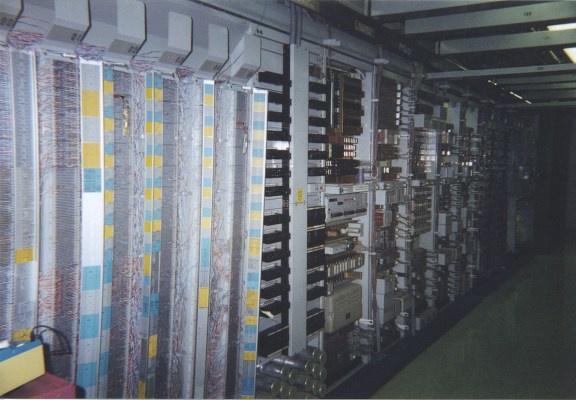
The Western Electric 1AESS Switch. The
panels at the close end are filled with
punchdown blocks. This is a
1979 model, quite a classic. It handles
voice (and slow modems) only and uses
in-band signalling.
Mr. Locke informs us that "The panels at the close end are
punchdown blocks, but
your phone wires don't go there. This is the trunk distributing frame.
Phone lines don't make an appearance here, only trunks."
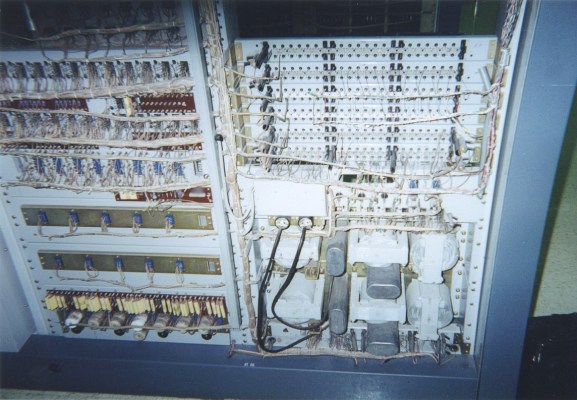
Western Electric 1AESS Switch, rear
view
The 1AESS is also full of relays,
hundreds of relays.
Mr. Locke informs us that "both frames are of the ringing and tone
plant, the one
on the right is the inverter section, the one on the left is the network
section. hundreds of relays doesn't come close. even the smallest 1a
has thousands. many many thousands of relays.">
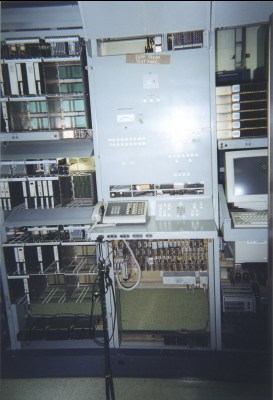
1AESS Supplemental
Trunk Test Panel.
Mr Locke informs us that this is used to test trunks, noise, loss,
etc.
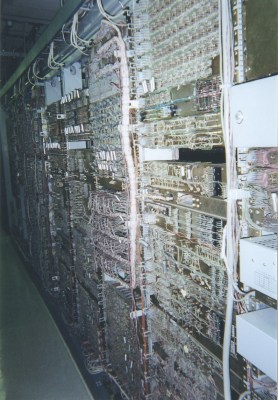
1AESS Switch rear view. Miles of wire..
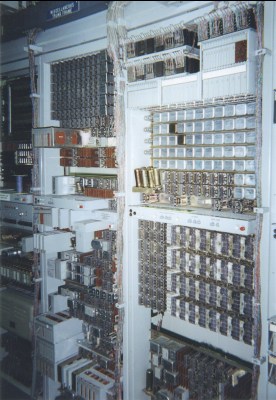
1AESS miscellaneous trunk frame, top half.
The square silver blocks are plug-in
relays. The thin brown objects are
plug-in cards
with transistors and other components
on them. The white-faced cards are
similarly made.
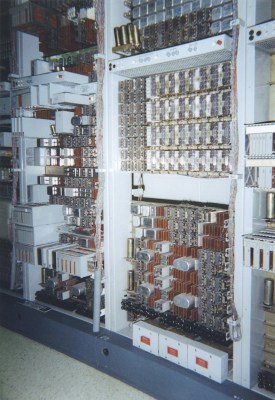
1AESS miscellaneous trunk frame, bottom half.
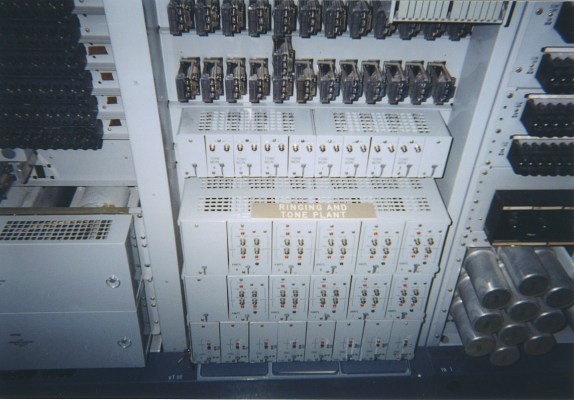
1AESS Ringing and Tone Plant. This is
where dial tones, busy signals, etc.
are generated. Analog circuitry abounds.
The rows of objects above are more
relays. The innumerable relays
constantly click and
clatter. The machine is truly alive
with its own thoughts and
you can almost feel its presence
of mind. Power
supply is to the left.
Mr. Locke informs us that the left of the picture is the
power distribution frame, or pd for short. Those are filter capacitors
on the bottom, fuse blocks above. The filter caps serve 2 purposes,
filtering any noise, and helping to clear faults during the time a fuse
may blow. This frame will distribute the -48v and +24v to the various
parts of the switch."
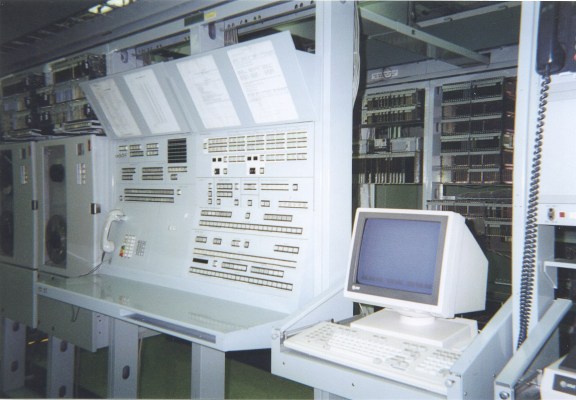
MCC (Master Control Console) of a 1AESS.
Beautiful, eh?
Mr. Locke informs us that "To the right of the picture is a terminal,
used for local
access to the switch, and to the right of that is the corner of a
printer, called the ROP, read only printer. if turned on, it prints
whatever is going on. can use up boxes of paper if one is not
careful."
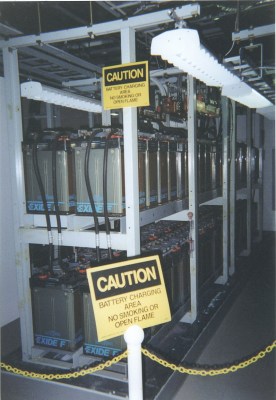
Batteries *are* included at your
Telefone company. In case you ever
wondered why the phones work when
the power is out, this is why.
Mr Locke informs us that "judging from the picture, those
batteries are exide
ftc-21p batteries, 1680 amp hours at the 8 hour rate. If they are old
enough, ,they would be Western Electric KS15544 L508 batteries, same
batteries only sold by WECO rather than Exide. Above the far end is the
"chandelier", the bus bar section of a power plant manufactured by AT&T
called a "Lineage 2000" power plant. If the plant is old enough and was
manufactured by Western Electric prior to 1985 it would be called the
"Bellmaster." The battery stands are non-seismic, and are most likely
J85004B, or ED14014 L10 G62, the very common western electric style
battery stand."
Accesses to page:

FastCounter by
bCentral
























